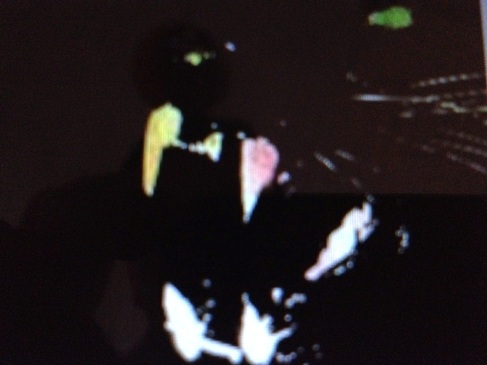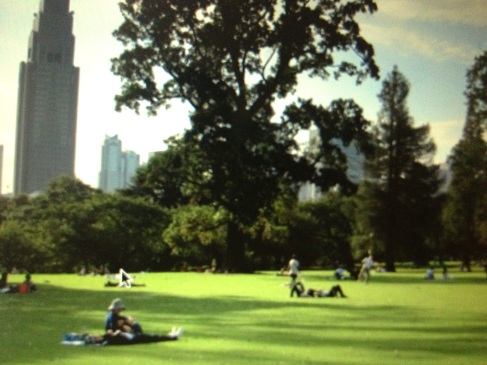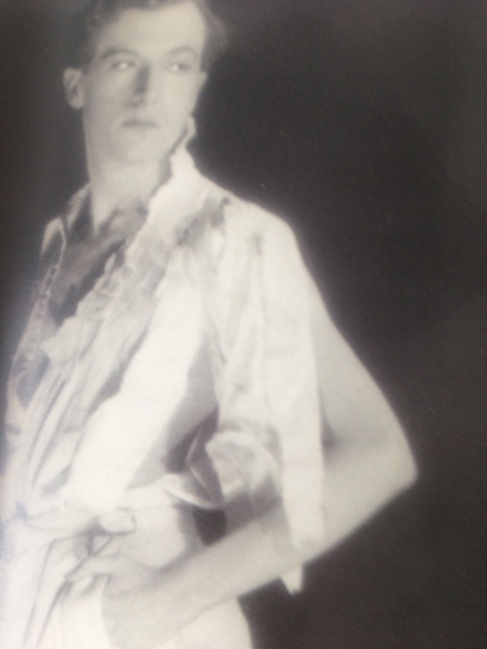
Nitobe Inazo, author of the classic (if highly supercilious) tome on Japan, Bushido, may consider the Japanese quite superior with their love for the evanescent fleetingness of the cherry blossom flower, a sweet but sorrowful bloom that symbolizes the ‘stoic’ samurai warriors’ desire to sacrifice their lives at the drop of a hat; while the gaijin, or westerner, ‘selfishly’ favours the rose that clings, with every last drop of its life, to the putrifying, stinking stem even when dead ….but I’m sorry, the rose is one of my very favourite flowers, and I imagine that I also will be clinging at my last; thorny and desperate, rather than plunging a sword into my gut and ripping out my innards, all for the sake of appearances and some dull and pointless idea of ‘honour’ (the code of the samurai is much more nuanced and spiritual than this, I realize, but you get my drift: I have never quite forgiven Nitobe for the disdain he shows the non-Japanese in that book, and the rose is an emblem I therefore adhere to even more passionately as a result.)

(idiot!!!!!!)
Anyway, the rose is a tricky one.
Rose oil, or its synthetic reconstitution, is a component of the vast majority of perfumes, and there are wildly different interpretations of this flower, meaning that although you may think you hate the rose if you have been brought up on granny talcs, or else Stella, and Paul Smith, and all those uptight, irritating contemporary roses, there still might be a perfume out there that might sway you if you deign to explore the rosaceous galaxy further.
Though none in my opinion has ever truly captured the exquisite beauty of a living, breathing flower (surely one of the most enthralling scents in the universe), a few come close, or take the theme to newer, unexpected places.
Rose is also, my view, a floral that is perfect for winter, not clashing with that touch of patchouli oil that is still hanging on to your jacket, remaining poised and stoic……an aroma of both piercing sorrow and hope; with a dignity, poeticism, and romantic attachment that make it far superior in my (not even remotely) humble view, to the puny, and nothingy, frou -frou cherry blossom.
ROSE ABSOLUE/ ANNICK GOUTAL (1984)
Supremely expensive for an eau de toilette, Rose Absolue is a diaphanous, sense-delighting spray of real rose oils, with several of the most prized species in perfumery. The crisp, exuberant top notes are truly delightful, and come very close to smelling like a garden of roses on a summer morning. The middle and base notes lose something as the essential oils evaporate (making it a costly habit to maintain), but for a delicious rose spritz, this cannot be beaten.
NAHEMA / GUERLAIN (1979)
The top note of the Nahéma vintage extrait is breathtaking: perhaps the most ravishingly gorgeous and complete rose absolute in perfume; a scent to make your heart swell, your diaphragm tremble. Whether you will fall for Nahéma or not though, (and it has its very faithful adherents), will depend on your liking roses romantic, full on, and sweet. Nahéma folds this stunning rose note in peach, hyacinth, aldehydes; ylang, vanilla and musk, and is deliriously rich, romantic – very Guerlain. If it is right for you, you will smell resplendent. If not, overdone.
ROSE/ CARON (1949)
If the roses in Goutal’s Rose Absolue are freshly picked, and the scent their breath, Caron’s is their blood; the enshrinement of a beauteous Bulgarian absolute (more regal, melancholy than Moroccan rose – the more ‘classic’ rose note) over a gentle bed of vanilla and musk. The extrait is beautiful; potent, emotive; a scent to be cherished. Almost painfully pure and beautiful.
For a similar, but somewhat chicer rose, try the other Caron rose perfume, Or et Noir: for sexual mystery, the house’s woody, musky incense rose, Parfum Sacré.
FLEURS DE BULGARIE / CREED (1880/1980)
A centenary reformation of an aristocratic, very strange scent from Creed, this peculiar, haunting rose perfume evokes another time and place, leagues away from brash current trends. It is at once tender, reserved, unabashedly tasteful, yet with an undeniable whiff of madness: generations of interbreeding among the loopy upper classes. A dry, high pitched, almost saline bunch of Bulgarian roses over an insinuating natural ambergris: the smell of stately homes, the fragile, yellowing pages of old books.
A difficult, but rather brilliant perfume, to be placed on a dresser by a window over the lawns, on which to do ‘one’s toilette.’
Beyond, the reedy river, in which perhaps to drown…
SA MAJESTE LA ROSE / SERGE LUTENS (2000)
A scornful rose. Dark swishes of crimson rose fragrance: grand, extravagant, a perfume of strength and beauty, but with ironic, opaque bitterness. Serge Luten’s rose is not romantic: his perfumer, Christopher Sheldrake, was presumably ordered to do away with such nonsense. Instead there is a stark regality here, just as the name suggests (a tart note of geranium, lychee and guaic wood sees to that), but also an elaborate heart of white roses, vanilla and honeyed Moroccan rose. It is an effective, gorgeous perfume that will leave you feeling splendidly detached.
CE SOIR OU JAMAIS / ANNICK GOUTAL (1999)
Perhaps the most vulnerable of rose perfumes, Ce Soir Ou Jamais (‘Tonight Or Never’) is a rich, breathy Turkish rose, unfolding in a tearful desperate embrace. It is natural, supremely feminine, and one of the most romantic perfumes you could ever wear.
ROSE OPULENTE/ MAITRE PARFUMEUR ET GANTIER
As it says, opulent, gorgeous, red-silk Bulgarian roses, for high camp and rose adorers. Quite beautiful, with leafy green top notes gracing a subtly spiced, ambergris rose.
ROSE EN NOIR/ MILLER HARRIS (2006)
Exclusive to Barney’s New York stores, this is a mildly repugnant, dark animalic rose with woody musk facets and top notes of jammy rhubarb.
Interesting, like someone unravelling at the seams.
ROSE DE NUIT / SERGE LUTENS (1994)
Paris. Had I had any money left by the time I got to the Lutens boutique at the Palais Royal (having already ‘done’ Caron, Guerlain, and Maitre Parfumeur et Gantier), this is what I would have bought from the astonishing selection of perfumes curated by the mysterious ladies hovering behind them. On myself I like darker, more menacing rose perfumes, preferably underscored by patchouli, and this really did the trick for me. Rich, effusive, and very outgoing, with a touch of jasmine, apricot, beeswax, and chypre. A rose for nighttime and adventure, to be worn with leather.
SOIR DE LUNE / SISLEY (2006)
A gorgeous, dark, honey-drenched rose enveloped by rich notes of chypre, mimosa, and powerful patchouli, Soire De Lune is almost tailor-made to my personal olfactory tastes. It is diffusive, warm, sexy and of high quality; not dissimilar to the company’s fantastic Eau Du Soir, but in my opinion even better. A rounded, accomplished scent with presence, and a new alternative to such night time illuminaries as Paloma Picasso Mon Parfum and Voleur De Roses. I doubt I will ever be without a bottle of this.
VOLEUR DE ROSES L’ARTISAN PARFUMEUR (1993)
The rose thief is a dark figure dressed in black, moving with stealth through the undergrowth, night soil underfoot; rose bushes standing erect and waiting in the moonlight, sensing they are about to be picked. A sensous, woody patchouli is entwined with a deep, rich rose and an unusual note of black plum, resulting in a very gourmand, intriguing scent worthy of its wonderful name.




















































